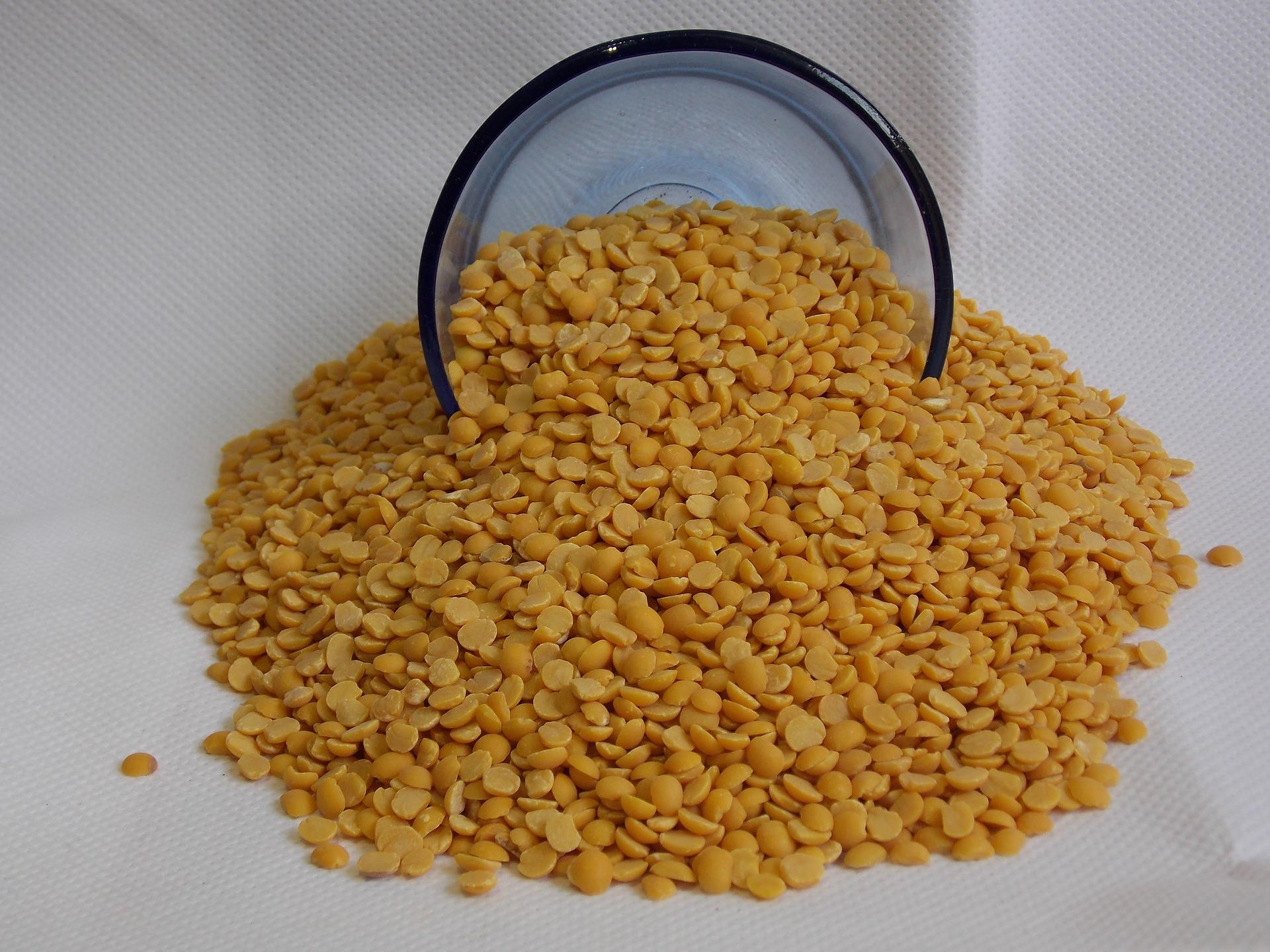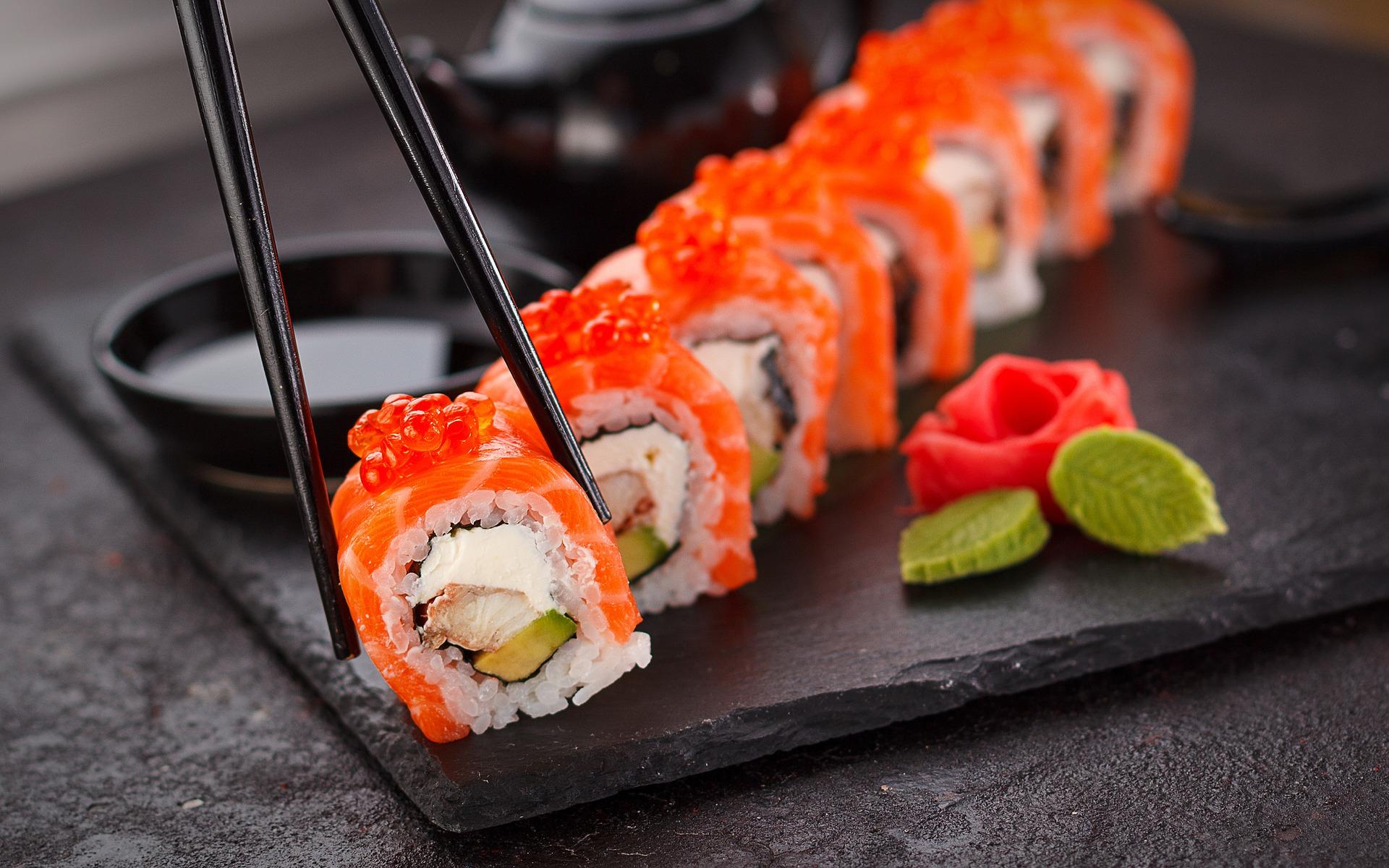There aren't many places you will go in the world and find that there aren't Asian foods available in the restaurants. Undeniably, this continent has given the world so much when it comes to food and drink.
In some cases, you’ll even find sushi (Japan), nem rán (crunchy fried spring rolls from Vietnam), Peking Duck and bok choy (China), and something stir fried all on the same takeout menu.
Asian recipes tend to focus on bringing five main flavours together: savoury, sweet, bitter, sour, and spicy. This is why each ingredient and the way they're cooked can be hugely important.
You don't need to wait until the Chinese New Year to eat tasty Asian food. Throughout this article, we’re going to take a trip across the different Asian cuisines and hopefully you'll be inspired to find a recipe for your next meal.
Want to try your hand at cooking different types of cuisine? Find cookery courses in London here.

Chinese Cuisine
In a country as big as China, it’s hardly surprising to find out that there’s a huge amount of variety and the Chinese themselves don't cook just one type of food. We should really talk about Chinese cuisines rather than just Chinese cooking in general. If you like to eat Chinese chicken salad, get ready to have your mind blown as there's more than just one way to do anything in a Chinese kitchen.
There are several styles that make up Chinese food, from Sichuan (also known as Szechuan), Shandong and Jiangsu (in the East), and Guangdong (in southern China near Hong Kong and also known as Canton). These styles are different due to the climate, geography, history, and lifestyle of the places they’re from.
Chinese recipes generally include rice, noodles, and vegetables. We often find soy, tofu, and seasoning like garlic, ginger, shallot, white pepper, and sesame oil. Soy sauce and rice vinegar are also frequently used in Chinese food.

If you want to cook Chinese dishes, you should know about the different styles. Heading from north to south, let’s have a look at some of the different types of Chinese food:
- Shandong: This is often known as Lu Cuisine in China. This is where most of the vinegar is produced and you can tell by the food they make.
- Jiangsu: This food relies on seasonal produce. Products need to complement one another in terms of colour and shape and soup is often used to bring more flavour to dishes.
- Sichuan: This is one of the regions in China (in addition to Yunnan) that offers spicy food. The main ingredients used are: garlic, pepper, ginger, peanuts, and sesame.
- Guangdong: This is also known as Cantonese. Given its proximity to the sea, Cantonese cuisine uses a lot of fish and seafood. Cantonese rice with char siu pork is one of the region’s most popular dishes. Dim sum and chow mein (a noodle stir fry) are also from there.
Traditional Chinese medicine has helped create healthy and balanced meals, too. Across the 8 great regional cuisines of China, food is designed to bring together taste and appearance.
So whether for a meal in a Chinese restaurant or at somebody’s house, food is often seen as a way in China for people to socialise, unlike in the UK, where a drink is a more common way for people to hang out.
You should also check out some of the best Asian food blogs for inspiration on what to make next!
Thai Cuisine
Thai cuisine focuses on the balance and precision between a variety of ingredients. Thai cuisine focuses on lighter dishes with strong aromas and a lot of different spices.
They make use of five main flavours: sweet, salty, bitter, sour, and spicy.
According to a CNN Travel’s “World’s 50 Most Delicious Foods (Reader’ Pick)” survey of 35,000 different people, Thai food was the most popular. Thai food made up most of the most popular dishes including: tom yum, pad Thai, Som Tam, Massaman curry, nam tok.

Rice and spice are inseparable when it comes to Thai cuisine, as well as tomato, corn, papaya, pineapple, coriander, cashew nuts, and peanuts, which were imported by the Portuguese and Spanish during the 15th and 16th centuries.
Popular Thai dishes include:
- Pad Thai. A stir-fried noodle dish made with rice noodles, eggs, tofu or shrimp, bean sprouts, peanuts, and lime. It is often flavored with tamarind paste, fish sauce, and chili.
- Tom Yum Goong. A hot and sour soup featuring shrimp, mushrooms, lemongrass, galangal, kaffir lime leaves, and Thai chilies. It is typically seasoned with fish sauce and lime juice.
- Green Curry (Kaeng Khiao Wan). A coconut milk-based curry with green curry paste, vegetables, and a choice of meat (often chicken or beef). It is known for its vibrant color and rich, aromatic flavor.
- Som Tum (Green Papaya Salad). A refreshing salad made with shredded green papaya, cherry tomatoes, green beans, peanuts, lime, fish sauce, and chilies. It can be adjusted to varying levels of spiciness.
- Pad See Ew. Stir-fried wide rice noodles with Chinese broccoli, eggs, and a choice of meat (such as chicken or beef). It is seasoned with soy sauce and sometimes oyster sauce.
Indian Cuisine
Authentic Indian cuisine is famous for its sophisticated use of spice, vegetables, herbs, and fruit. Given the size of the country and the variety of climates, cultures, ethnicities, and religions, there’s a huge variety when it comes to dishes.
Religious traditions have heavily influenced the way the natives eat. A large percentage of the population is vegetarian, for one.
The main ingredients include starchy vegetables like the pearl millet (bājra), rice, atta flour, and a large variety of lentils like masoor, toor, and mung bean. Dal is one of the most famous dishes to make use of lentils.
Some traditional Indian dishes include:
- Biryani: A flavorful and aromatic rice dish made with basmati rice, meat (such as chicken, mutton, or beef), and a blend of spices. Biryani is often garnished with fried onions, mint, and coriander.
- Butter Chicken (Murgh Makhani): Tender chicken pieces cooked in a creamy tomato-based curry, often flavored with butter and various spices. It is typically served with naan or rice.
- Paneer Tikka: Marinated and grilled cubes of paneer (Indian cottage cheese), often served with mint chutney. It's a popular appetizer or snack.
- Chole (Chickpea Curry): A North Indian dish made with chickpeas cooked in a spicy and tangy tomato-based gravy. It's often served with bhature (deep-fried bread) or rice.
- Dosas and Idlis: South Indian staples, dosas are thin, crispy pancakes made from fermented rice and urad dal batter, while idlis are steamed rice cakes. They are typically served with coconut chutney and sambar (a lentil-based vegetable stew).
- Rogan Josh: A flavorful and aromatic Kashmiri curry made with tender pieces of meat (usually lamb or goat) cooked in a rich, spiced tomato-based gravy.
- Saag Paneer: A Punjabi dish made with paneer cubes cooked in a creamy spinach gravy. It is often served with naan or rice.
- Tandoori Chicken: Chicken marinated in a mixture of yogurt and spices, then roasted in a tandoor (clay oven). The result is a flavorful and slightly charred dish.
- Aloo Gobi: A vegetarian dish made with potatoes (aloo) and cauliflower (gobi) cooked with Indian spices. It's a common home-cooked meal.
Want to try your hand at some of these Indian recipes? Take cooking classes from Superprof's renowned tutors.


Vietnamese Food
Vietnamese food focuses on the 5 main flavours and most dishes combines several or all of them. Common ingredients include fish sauce, shrimp extract, soy sauce, rice, fresh herbs, fruit, and vegetables. Vietnamese dishes also include aromatic seasoning like lemongrass, ginger, mint, cilantro, cinnamon, pepper, and lime and may use a wok to prepare the food. Learn more about cooking Asian food using a wok if you are ready to give it a go.
Vietnamese cooking is famed for using fresh produce, complementary textures, aromatic vegetables, a lack of oil and dairy products. This is why it’s some of the healthiest food in the world.
Some classic elements of Vietnamese cuisine include:
- Pho. Pho is a famous Vietnamese noodle soup consisting of broth, rice noodles, and meat, usually beef or chicken. It is flavored with aromatic herbs and often served with lime, bean sprouts, basil, and chili.
- Fresh Spring Rolls (Goi Cuon). These are made with rice paper and filled with a combination of fresh vegetables, herbs, rice vermicelli, and sometimes shrimp or meat. They are often served with a dipping sauce.
- Banh Mi. A Vietnamese sandwich that typically consists of a French baguette filled with various ingredients such as grilled meats, pate, mayonnaise, pickled vegetables, and cilantro.
- Nuoc Mam (Fish Sauce). Fish sauce is a fundamental condiment in Vietnamese cuisine. It is used to add a savory and umami flavour to many dishes.
Japanese Cuisine
Japanese food is famous for using seasonal produce, high quality ingredients, and careful preparation. There is very little fat or grease in Japanese cooking. This helps the ingredients retain their natural flavours.
Regional specialities (known as kyōdo ryōri in Japanese) often include fish. Sushi and sashimi are popular, leaving little room for meat dishes in the Land of the Rising Sun. Sushi is one of the elements that most of us think of when we are thinking about the cuisine on offer in Japan, and is one of the most popular exports of the country.

However, on the island of Okinawa, in south of Japan, there are different dishes due to the different climate and culture. The cuisine includes Chinese influences, such as the sweet potato, which was introduced in 1605.
Traditional Japanese cuisine is a mix of Chinese and Thai influences, such as the technique for distilling Awamori, a type of alcohol from Okinawa which first came from Thailand.
Some of the classic Japanese dishes include:
- Sushi. Sushi is perhaps one of the most famous Japanese dishes. It involves vinegared rice combined with various ingredients such as raw or cooked seafood, vegetables, and occasionally tropical fruits. Common types of sushi include nigiri, sashimi, and maki rolls.
- Sashimi. Sashimi consists of thinly sliced raw fish or seafood, often served with soy sauce and wasabi. It highlights the natural flavors and textures of the fresh ingredients.
- Ramen. Ramen is a popular Japanese noodle soup dish. It typically consists of Chinese-style wheat noodles served in a meat or fish-based broth, flavored with soy sauce or miso, and topped with ingredients like sliced pork, seaweed, green onions, and a boiled egg.
- Tempura. Tempura is a dish where seafood or vegetables are coated in a light, crispy batter and deep-fried. It is often served with a dipping sauce called tentsuyu.
- Donburi. Donburi refers to a bowl of rice topped with various ingredients. Some popular variations include Katsudon (breaded and deep-fried pork cutlet), Oyakodon (chicken and egg), and Gyudon (beef and onion).
- Udon and Soba Noodles. Udon and soba are two types of Japanese noodles. Udon noodles are thick wheat noodles served in a variety of broths, while soba noodles are thin buckwheat noodles often served cold with a dipping sauce.
Korean Cuisine
Korean cuisine has prehistoric roots that have evolved due to cultural, political, and environmental factors. Common ingredients include rice, vegetables, and meat. Most traditional dishes are served with steamed rice.
Kimchi, a dish made from fermented vegetables, is served with almost every meal in Korea. It’s made of napa cabbage, radish, shallot, garlic, ginger, or cucumber.

Other seasoning includes sesame oil, doenjang (soybean paste), soy sauce, salt, pepper, and gochujang (red chilli paste).
Some of the common types of food and characteristics of Korean cuisine include:
- Fermented Foods. Fermentation is a crucial element in Korean cuisine. Kimchi, a type of fermented vegetable, is a staple in Korean meals. It can be made with various vegetables, such as napa cabbage or radishes, and is seasoned with chili pepper, garlic, ginger, and other spices.
- Rice. Rice is a staple food in Korea and is often served with every meal. It can be steamed, fried, or used to make rice dishes.
- Banchan (Side Dishes). Korean meals typically include a variety of banchan, which are small side dishes served family-style. These can range from kimchi and pickled vegetables to small portions of meat, fish, or tofu.
- Spicy Flavors. Korean cuisine is known for its use of spicy flavors, often derived from gochujang (fermented red chili paste) and gochugaru (chili powder). Spicy dishes like kimchi jjigae (kimchi stew) and buldak (fire chicken) are popular.
- Barbecue (Samgyeopsal). Korean barbecue is a popular way of grilling meat, usually pork or beef, at the table. The grilled meat is often accompanied by a variety of dipping sauces and wrapped in lettuce leaves with garlic, green onions, and ssamjang (a thick, spicy paste).
Lesser-Known Asian Cuisines
There are some Asian cuisines that have spread across the world and some still making their journey. It doesn't take long to find out how Asian cooking differs from Western cuisine and the significant variations in the styles.
Cambodian Cooking
Cambodian food mainly consists of tropical fruit, rice, noodles, drinks, soups, and desserts. The dishes play with a variety of flavours, temperatures, and foodstuffs.
Rice is the foundation of most dishes and can be found at every meal of the day. It’s served with fresh grilled fish, soup, and an assortment of herbs and vegetables.
There are so many different rices for a variety of different tastes. Sticky rice is often eaten for dessert with slices of mango and coconut milk. Rice is also eaten as a snack: fried rice cakes with chives, spinach, or even porridge with rice.
Burmese Cooking
Burmese cuisine is influenced by Chinese, Indian, and Thai cuisine.
However, Burma has kept certain cooking techniques and unique flavours. There are many variations on the “standard” dishes.
The Burmese don’t eat with chopsticks or a fork, they eat the food with their right hand. They make a ball of rice in their hands and then roll it in the different ingredients before putting it in their mouth. The Burmese eat a large variety of vegetables, fruit, and meat.
Check out some exceptional online cooking courses on Superprof.

One of the most popular vegetables is the pea that grows on the Archidendron pauciflorum tree, commonly known as Djenkol, Jenkol, or Jering. The peas are generally boiled, roasted, or soaked in salt, oil, or coconut oil.
Lao Cuisine
Laos borders China, Burma, Thailand, Cambodia, Vietnam, and has been heavily influenced by Cambodian and northern Thai cuisine. Sticky rice, which is eaten with your hands, is common to most Lao dishes.
Did you know that it’s the stickiest rice in the world?
The Lao people are often known as luk khao niaow (the children or descendants of sticky rice).
Larb is one of the most common Lao dishes and consists of raw meat or fish marinated in spices and herbs. Tam mak hoong, a spiced papaya salad, is another popular Lao dish.
Lao cuisine varies by region and the produce grown there. There’s also a strong French heritage in Vientiane. There are a lot of French restaurants since the country was once controlled by the French.

In short:
- There’s way more than just one type of Asian cuisine. This would be like saying “European cuisine” and lumping British, French, Italian, Greek food together. Asian style food is as rich and varied as the continent it's from. Since Asian dishes can include crispy vegetable dumplings or wontons, hoisin duck, chicken satay skewers with peanut sauce, sushi, chicken noodle soup, and garlic chili prawn, you're spoilt for choice!
- Chinese culinary tradition varies by region. It’s not usually spicy, except in regions like Sichuan and Yunnan.
- Thai cuisine is very spicy and varied. It’s the most popular type of food around the world. Popular dishes include pad Thai and green curry.
- Indian food is great for vegetarians and often includes plenty of vegetables. The country has more types of lentils can you could dream of. Samosas and curries are very common in India. You should try lassi, a yoghurt-based drink and delicacy.
- Burmese cuisine also includes a lot of vegetables. It often uses oyster sauce for preparing chicken and a variety of vegetables.
- Lao cuisine shares certain similarities with Burmese food. There’s a big French influence in the country's capital. However, you should focus on more typical dishes like pho, noodle soup, and Lao sausages.
- Cambodian food often uses rice as a base. You’ll probably have it with every meal if you go there.
- Vietnamese food is considered some of the healthiest around. You should also try caramelised pork, though not as healthy!
- Japanese food is also very healthy because it rarely uses grease or fat and includes a lot of seafood. In addition to sushi, Japanese also includes teriyaki, where meat is grilled with a delicious soy sauce glaze making it delicious and tender.
- Korean food uses rice, vegetables, and meat. Barbecued food is popular in Korea, unlike in most other Asian countries where frying meat in a wok is more common.
- If you visit anywhere in Asia, you’ll notice that there are certain dining customs that are very distinct to our own heritage.
Inspired by the world of Asian cuisine? Check out these easy Asian recipes for inspiration if you want to cook your own dishes.















